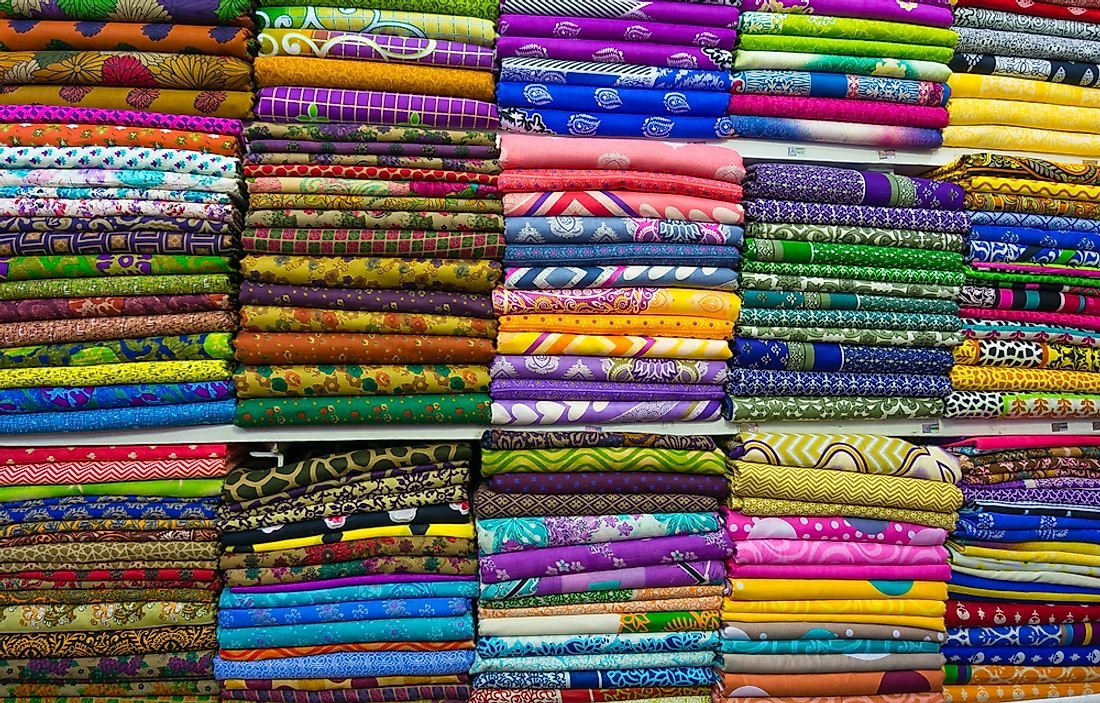What Are The Biggest Industries In Bangladesh?

Bangladesh, located in South Asia, is the world’s 8th most populous country as well as one of the world's most densely populated. Most of the country is covered by the Bengal Delta. The country is considered a middle power and a developing nation. It has the 43rd largest economy by nominal GDP and 29th largest by purchasing power parity. Since independence, the country has achieved a tremendous growth rate in its industrial production and economic growth.
Bangladesh remains an important trade partner to the EU, the US, China, Japan, Singapore, and India. Its strategic location between South, Southeast, and East Asia makes it an important promoter of cooperation and regional connectivity. Here are the biggest industries in Bangladesh that have made it competitive in the international market.
Textile Industry
Bangladesh has the largest textile industry in the world. The industry remains the strongest root of the economy and the leading source of export earnings, accounting for about 80% of the total export. Bangladesh is the second-largest textile exporter behind China. This industry employs up to 3.5 million people, of which the majority (80%) are women, the highest female labor participation in the country. In 2009, Bangladesh exported US$ 120.1 billion worth of textile. About 60% of the textile is exported to Europe and about 40% to America.
The major challenges faced by those working in the textile industry are low pay and not so ideal working conditions. The workers are prohibited from forming labor unions and striking.
Farming
Although the textile industry is the largest contributor to the country’s export earnings, agriculture is Bangladesh’s largest employer. About 60% of the population work in agriculture and about 30% of the GDP also comes from agriculture. The performance of the agricultural sector has a direct impact on the several macroeconomic objectives such as poverty eradication, employment, food security, and human resource development. One of the main objectives of the government of Bangladesh is to fulfill its population’s food requirements. Unfortunately, the government is yet to achieve the objective due to the frequent floods.
The majority of the population earn their income from agriculture. Bangladesh's primary crops include rice, jute, tea, tobacco, wheat, tomato, and pulses. Because the country has fertile soil, rice can be grown and harvested three times a year. In 2000, it produced 35.8 million metric tons of rice, effectively making it the country’s principal crop. Due to Bangladesh’s labor-intensive agriculture, it has increased its food grain production despite the frequent floods. The major problem faced by the agricultural sector is the growing population that has continued to place pressure on the productive capacity, leading to a food deficit. Underemployment also remains a serious problem and concern to the sector.
Shipbuilding
The shipbuilding industry is a growing industry in Bangladesh with great potential to become one of the largest in the country. The history of shipbuilding in the country dates back to the early modern era. However, the industry emerged in recent years when the locally made ships begun to be sold overseas. Today, the country has over 200 shipbuilding companies, mainly concentrated in Dhaka, Khulna, Narayanganj, Chittagong, and Barisal.
The first shipbuilding and exporting company in Bangladesh was the Ananda Shipyard and Shipways Limited, founded in 1983. The company has since acquired several contracts, mostly from the EU countries. Other major shipbuilding companies in the country are the Khan Brothers Shipbuilding Limited and Western Marine Shipyard Bangladeshi potential for shipbuilding has made it be compared with the likes of China, South Korea, and Japan.
Tourism
In 2013, the World Travel and Tourism Council announced that the tourism industry in Bangladesh generated 1.2 million direct jobs the previous year (2012) or 1.8% of the workforce, ranking the country 157 out of 178 countries worldwide. The industry also generated an additional 1.5 million indirect jobs. While compared to other countries, the figures are low, but the tourism industry still plays a key role in the economic growth of Bangladesh. The country has a wide range of attractions including beaches, wildlife, picnic spots, and historical monuments.
Information, Communication, and Technology
Bangladesh’s ICT sector is an example of what can be achieved if the government create and invests its skilled workforce in the sector. The sector started in nuclear research in the 1960s and over the years the large organizations have adopted the use of computers. Though the industry is yet to make a tangible contribution to the country’s economy, its growth cannot be overlooked. In a study conducted by the World Bank in 2008, Bangladesh’s IT services and software are expected to grow by triple digit.











